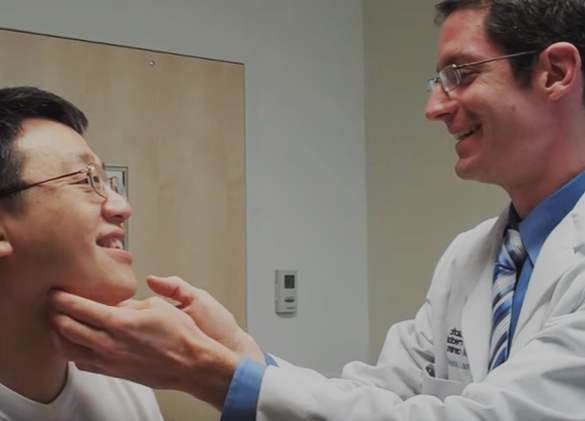See how nasal pseudo-hump reduction from the bridge is achieved with radix grafting to create a more natural appearing rhinoplasty result.
One of the most common things done during rhinoplasty surgery is taking down a dorsal hump or bump from the bridge. One variation of this problem that creates the illusion of a large bump is what's called a pseudo-hump.
What is the radix?
Before discussing what a pseudo-hump is we need to outline what the radix is. The radix is the upper part of the nose that falls where the bridge meets the forehead (just below the area between the eyebrows). 
Ideally the radix starts at a level roughly between the eye lashes or upper eyelid supra-tarsal crease.
What is a pseudo-hump?
A pseudo-hump refers to a nose in which the radix is under-developed and under-projecting. This leads to a profile in which the tissue below the radix appears even fuller than it really is. This schematic shows how a pseudo-hump is created when the bone of the radix doesn't project the overlying soft tissue adequately.
How do you treat an under-developed radix?
An under-projecting radix is best treated during rhinoplasty with tissue grafting. I prefer to use a carved cartilage graft that can be placed below the skin and muscle of the nose where it is camouflaged very nicely. This schematic illustrates how the boney deficit is counter-acted by placing the cartilage graft over the bone where it lifts the depressed soft tissue. The result is a much straighter profile without needing to remove any bone or cartilage below the radix.
You can also use a fascia graft to create a more subtle result. This graft can either be from perichondrium (tissue that covers cartilage) or temporalis fascia (tissue covering the temporalis muscle).
Can you have a weak radix and a true hump?
You can have both an under-developed radix and a true hump. The benefit of addressing both is that more conservative hump removal can be done. As the radix position is elevated the ideal profile line is brought closer to the hump. As a result less of the hump has to be removed to create the proper profile. An additional benefit of this approach is that the nose appears less operated on or "surgical" thanks to the stronger nasal starting point. Check out an example of a rhinoplasty where I combined hump reduction and radix graft placement here.
In my next post I'll show some more before and after case study photos of patients who've had radix grafting.


